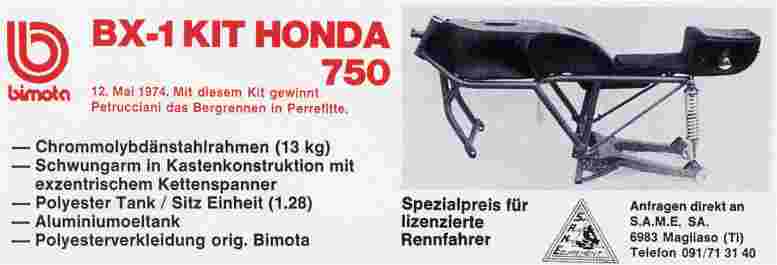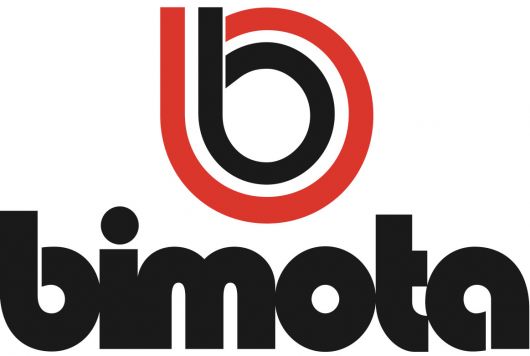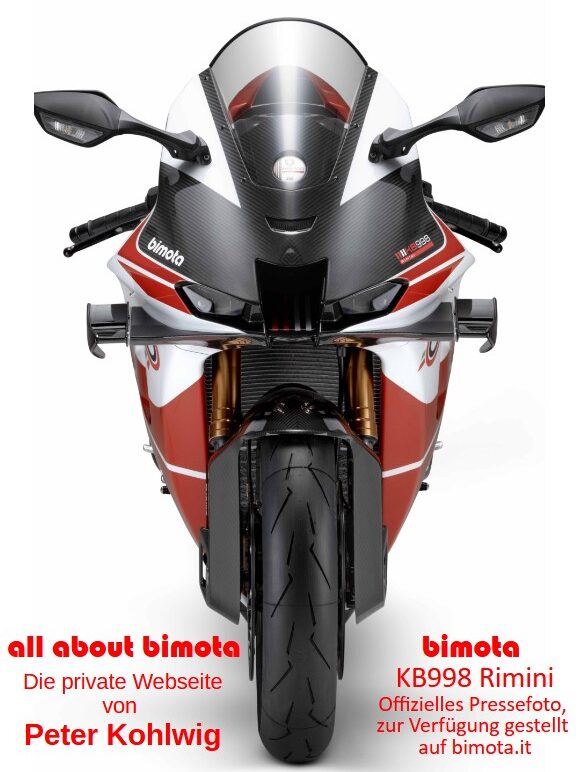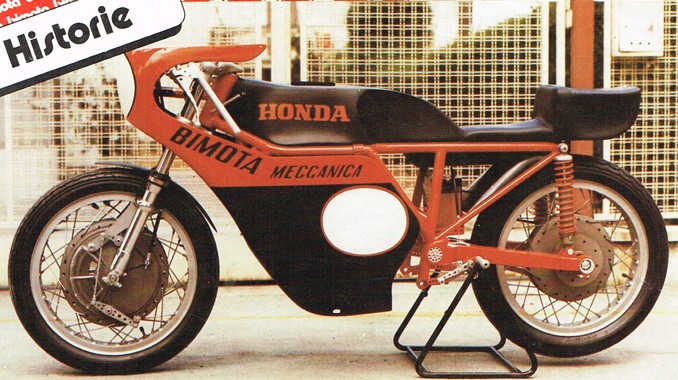
| Designer | Massimo Tamburini | Presentation | Misano 1973 |
| Production period | 1973 – 1975 | Production number | 11 incl. prototype thereof 9 kits |
| Power | 49 KW (67 PS) | Displacement | 736 ccm |
| Topspeed | ca. 200 km/h | Weight | < 200 kg |
| Price | 1.800.000 Lire (1975) appr.. 4.500 DM | Colours | red / white |
| Technical basis | Honda CB 750 |
The technology of the HB 1 is based on the Honda CB750, which was presented at the Tokyo Motor Show in October 1968. It was the first mass-produced four-cylinder motorcycle, marking a true milestone in motorcycle history. Its two-valve engine, with a displacement of 736 cc and an overhead camshaft, delivers 67 hp at 8,000 rpm. Despite the chassis being too weak for the powerful engine, over 100,000 units were sold. One of them belonged to Massimo Tamburini, who had an accident with his Honda at the Autodromo di Santa Monica in September 1972.
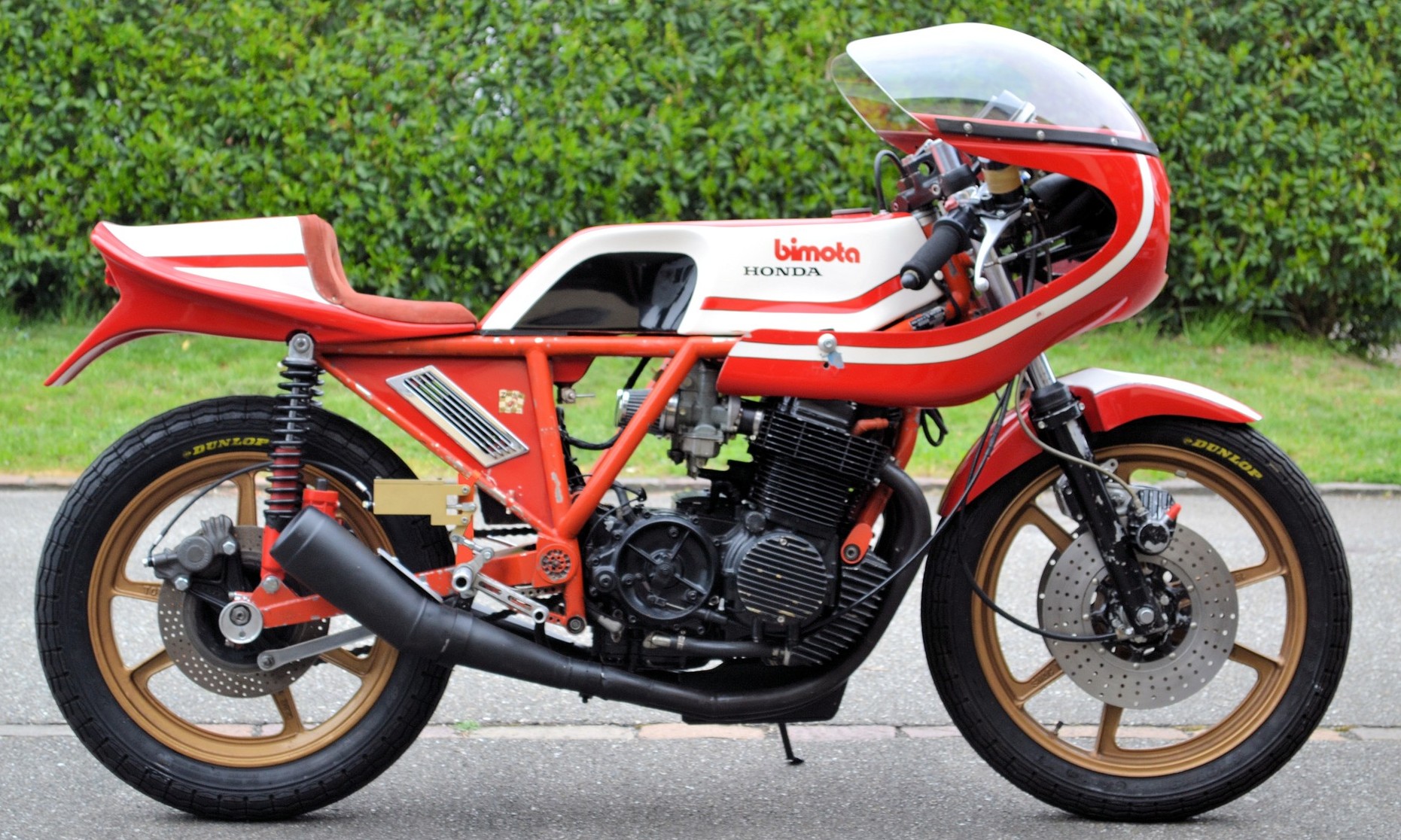
After his recovery, Tamburini developed a new frame for the remnants of his CB750. His goal was to create a lighter, stiffer alternative to the standard double-loop frame, capable of handling the nearly 70 hp of the engine. He used high-strength chrome-molybdenum steel tubes and integrated the engine as a stressed member element, eliminating the need for the usual frame underrails. The new frame weighed only 13 kilograms. Additionally, he constructed a stable box-section swingarm with two shocks attached to the frame, and the rear axle was mounted using two eccentrics. This solution, patented by Bimota, allowed for easy and precise chain tension adjustment. Tamburini completed the chassis with a Ceriani fork and spoked wheels featuring a duplex drum brake at the front and a single drum brake at the rear.
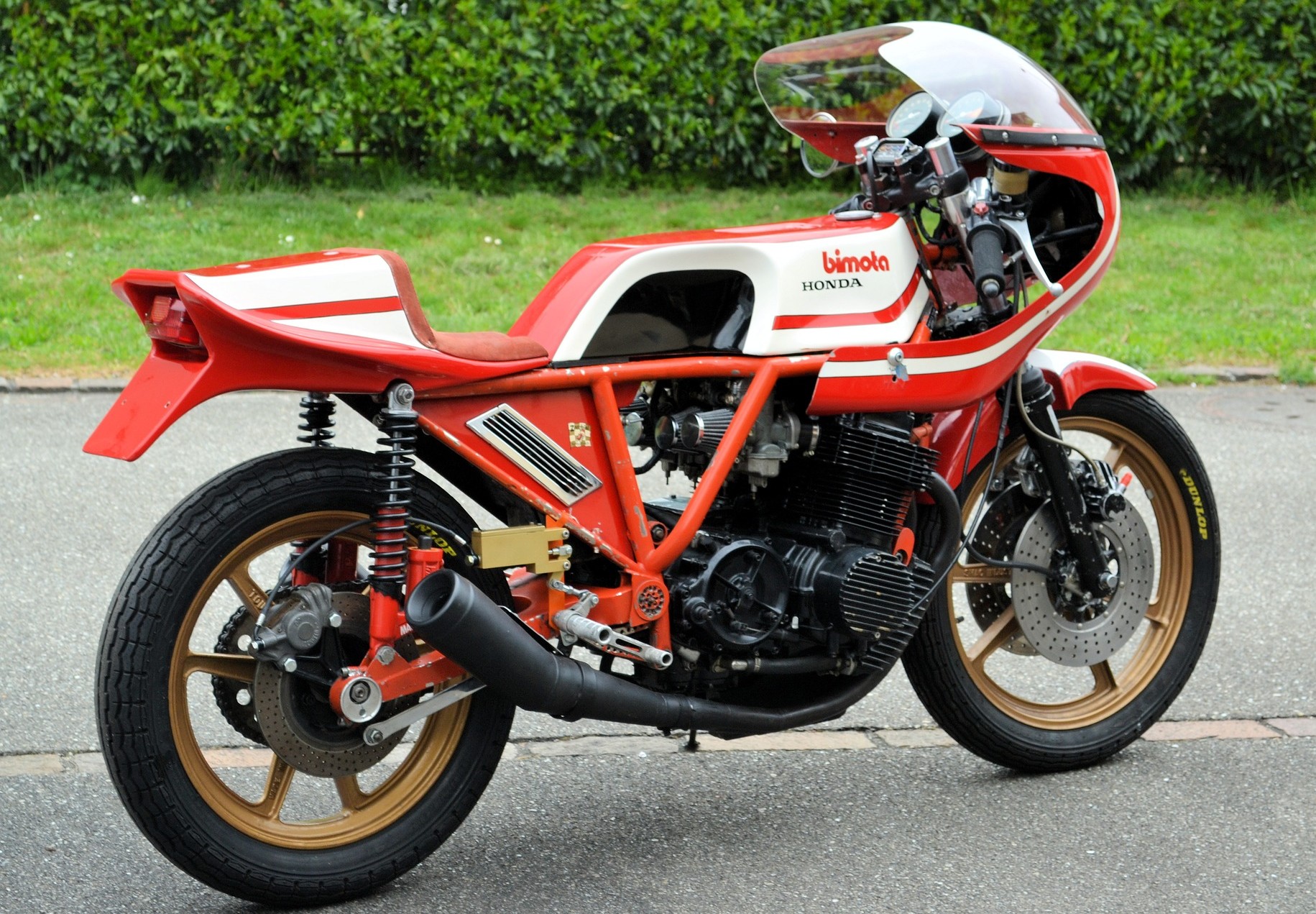
After promising test rides, the first race was planned for mid-April 1973 at the 200 Miles of Imola, with Luigi Anelli as the rider. However, a suitable setup could not be found during training, so Anelli raced on a Honda. Nevertheless, Tamburini continued to optimize the chassis over the weekend. On the Monday after the race, Giuseppe Elementi tested the modified HB1 and achieved lap times that had winning potential.
The result was numerous inquiries from interested parties, leading Bimota to produce a small series incorporating further improvements. The first fully assembled machine featured Elektron alloy wheels, a light alloy with at least 90% magnesium and aluminum, a 4-in-4 exhaust system, and disc brakes. Subsequently, nine kits intended for racing use were produced. In addition to the frame and swingarm, the kits included fiberglass parts (fairing, tank, and seat hump) as well as an additional oil tank. Elektron wheels, the exhaust system, Brembo disc brakes, a Ceriani fork, and an aluminum footpeg assembly could be ordered as optional extras.
Ultimately, all HB1 models were and still are unique pieces, sharing only a few common components: the frame, the swingarm, the additional oil tank mounted in front of the engine made from cast aluminum, and the body parts made from polyester resin and fiberglass. These elements form complete machines, which are finished according to the individual requirements and financial means of their owners.
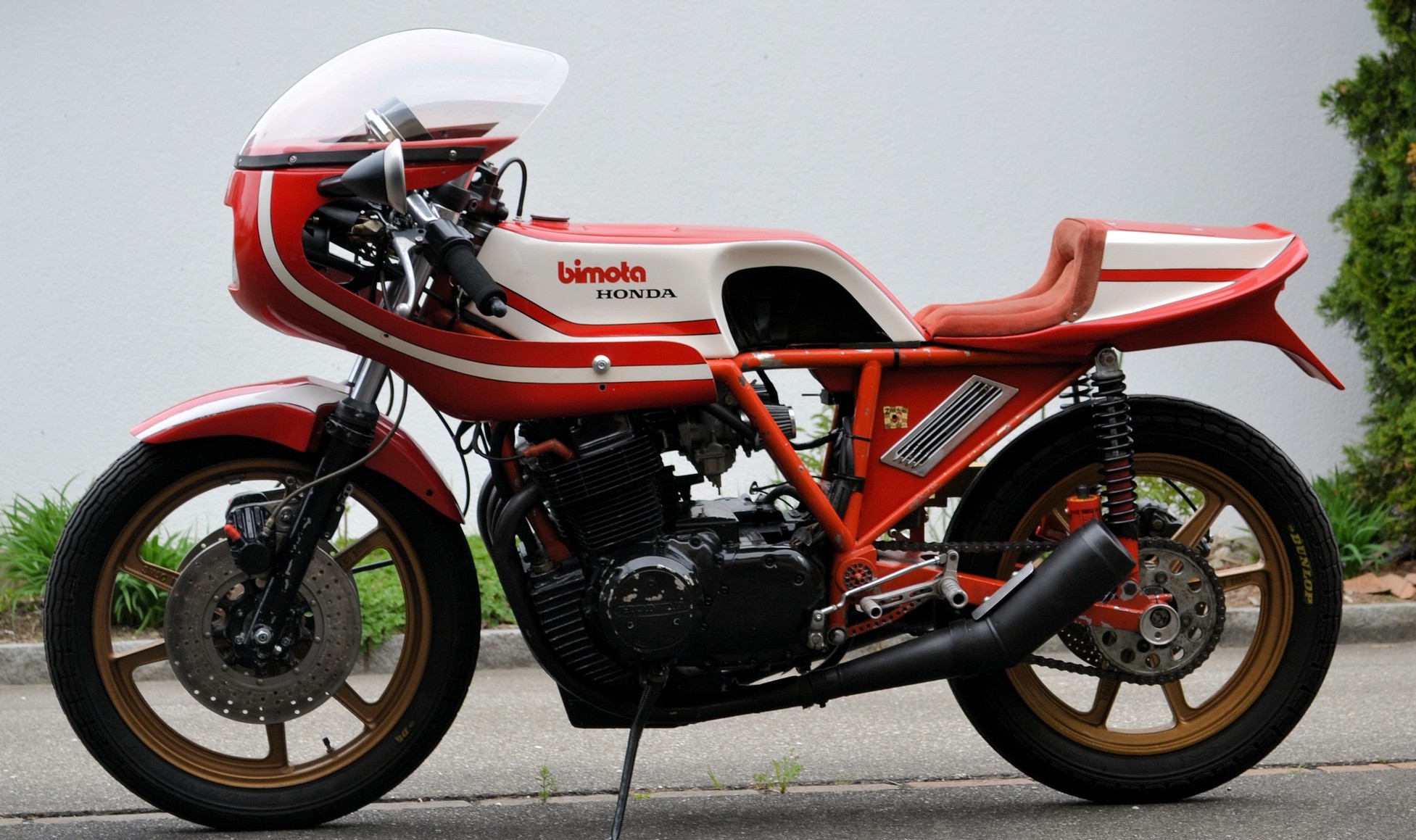
Although Bimota sold only one complete motorcycle and nine kits in addition to the prototype, offers can still occasionally be found on the internet. However, extreme caution is always advised. On the one hand, it is said that as early as the mid-1970s, a Northern Italian company produced additional frames as replicas for racers. On the other hand, there are also current sellers who reproduce HB1 frames. As a result, some models are being offered for over €60,000 with single-digit chassis numbers, even though the original Bimota frames did not have any numbers at all. They were intended exclusively for racing.
